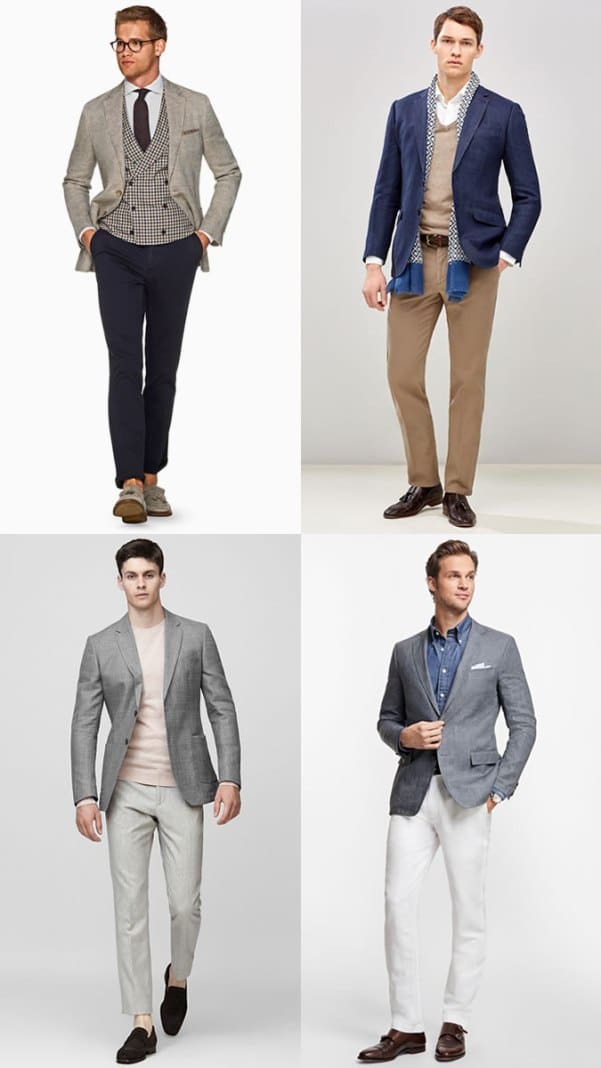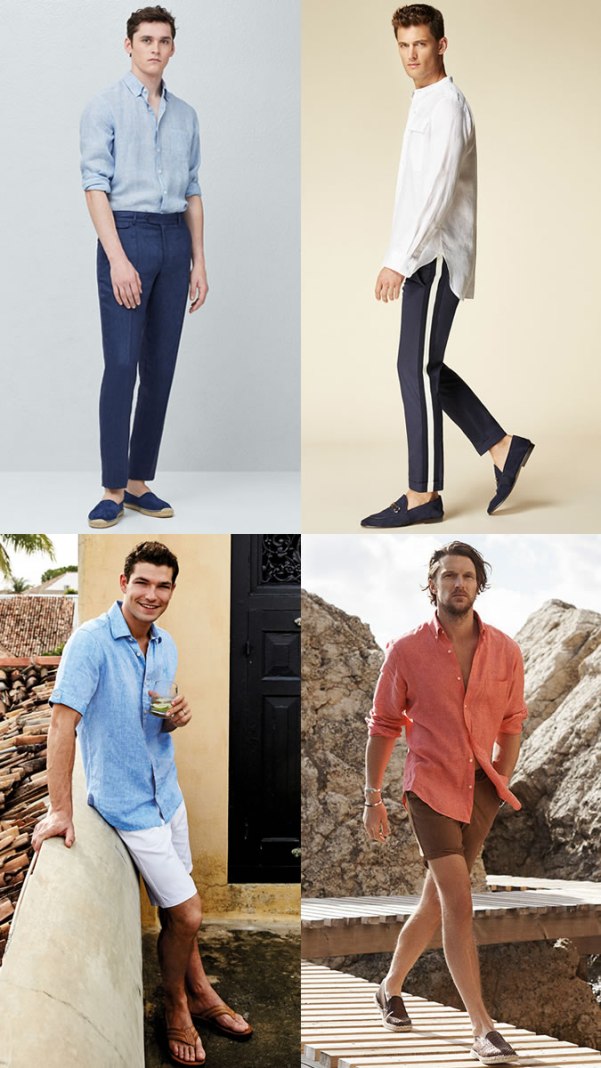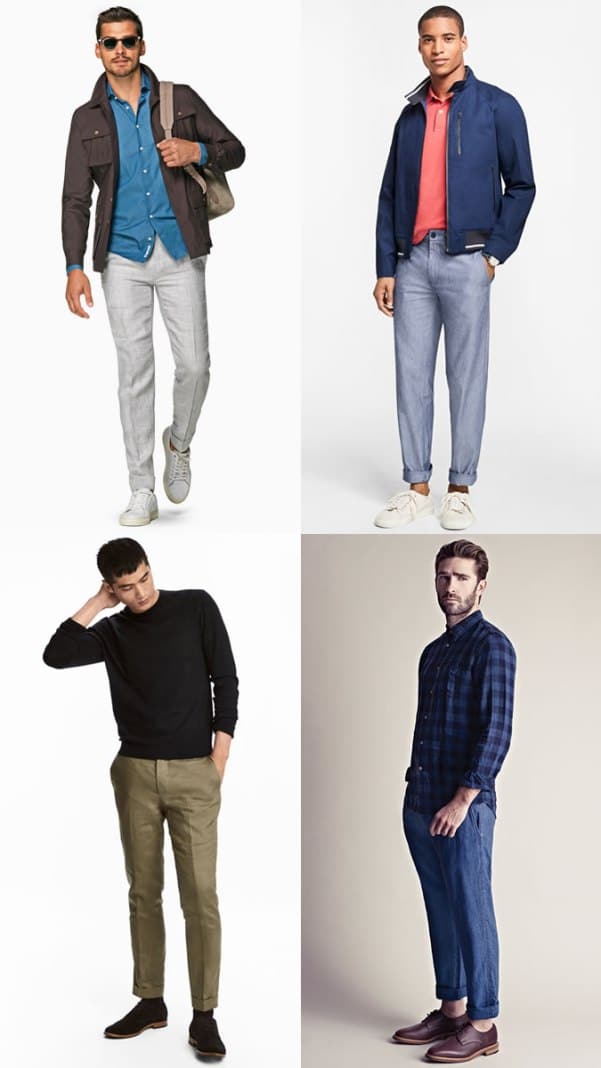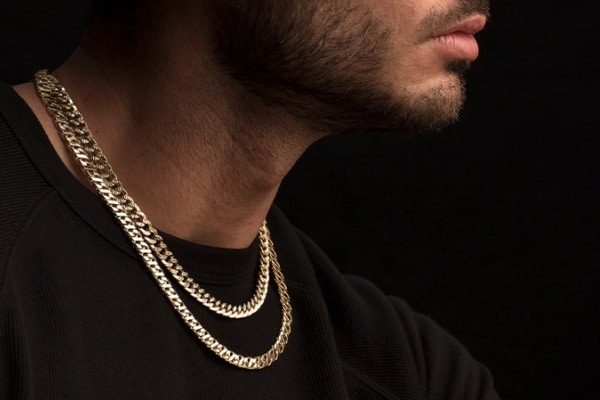Linen Expert Guide And How To Wear It
When it comes to staying cool in the summer heat, linen really can’t be topped. So, why has it developed a reputation as being a bit ‘past it’? Most likely it’s a…
When it comes to staying cool in the summer heat, linen really can’t be topped. So, why has it developed a reputation as being a bit ‘past it’?
Most likely it’s a Victorian hang-up over creases. but as many Mediterranean dandies have proved, it can make for a raffishly sophisticated look when you know its properties and how to get the best out of them.
What Is Linen?
A natural fiber made from the stalks of the flax plant Linum usitatissimum. There is evidence to suggest that a linen manufacturing industry was in operation in Egypt over 4,000 years ago. Knowledge of the processes involved in making linen was eventually carried into southern Europe via the Phoenicians. But it was Belfast in Northern Ireland that became the linen hub of the world; producing almost all of the fabric during the Victorian era.
Bed linen was coveted by the upper classes for its cool and soft feeling against the skin, becoming a mark of wealth and social standing. These days, textiles account for the majority of linen grown, with clothing forming only a very small percentage; making a well-sourced and cared-for linen shirt an all the more valuable addition to your wardrobe.
Linen Versus Cotton – The Benefits
Coolness
Linen is highly breathable, much more so than cotton due to its comparatively lower thread counts. Take bedsheets, for example. A fine Egyptian cotton bed sheet will start at about a 200 thread count, while a similar quality linen sheet will have a thread count of between 80 and 150.
Absorbency
Linen has a very high moisture absorbency rate, making it the ideal summer fabric for hot and humid climates. It’s also hypoallergenic, which means sweat is less likely to break down its fibers.
Combined with its lack of elasticity, this ability to quickly absorb and wick away moisture from the body accounts for the ease with which linen can crease.
Resilience & Longevity
While linen is 30 percent stronger than cotton, its chief advantage is its longevity. Although a brand-new cotton shirt will feel smoother and silkier to the touch, linen only really starts coming into its own after about three to five years of wear.
It tends to become softer and shinier with each wash too, whereas cotton does the opposite. Flax fibers don’t stretch a great deal and are resistant to damage caused by abrasion, which generally speaking is a good thing; although repeated folding and ironing can wear out collars on linen shirts.
How To Wear Linen
While a premium fabric like cashmere has become entirely mainstream (with a huge number of lower quality yarns available on the market); linen remains a polarizing material, as evidenced by British actor Bill Nighy in an interview he gave The Telegraph in 2010. “Never trust a man in linen. I can’t relax around a man in a linen suit. Men in unstructured suits are unsettling, and the greatest offenders are those who risk it.”
Yet swathes of discerning Italian and French men can pull off the slightly crumpled effect with aplomb. So what gives? First and foremost, linen is in a way an affront to our very British taste –sartorial history simply deplores creases. They are anathema to suited and booted gentlemanly style.
However, you’ll be hard pushed to find 100 percent linen pieces these days. Brands are well aware of the general aversion to creasing and as such, tend to blend linen with either cotton or silk. The result is a perfect lightweight fabric with great structure, breathability, and distinctly European insouciance.
Linen Suit
To wear linen confidently is to embrace the materials’ relaxed crumpledness, and the easiest way to do this is with a linen suit. Ideal for a relaxed summer wedding, particularly in a shade of tan, a simple two-piece allows you to beat the heat and still look smart.
Finish with a gingham shirt in crisp cotton to add both contrasting textures and patterns.
CHECK: Men’s Dress Codes Guide For All Occasions

Linen Blazer
Go halves on your suit with a neatly cut linen casual blazer to stay breezy but still business-appropriate. Trousers are more prone to creasing from sitting down, so keep them freshly pressed in a dark cotton or cotton blend and opt for a lighter jacket up top.
This can also be worn with chinos or jeans for a solid go-to weekend look.
CHECK: Business Casual Dress Code For Men

Linen Shirt
A linen shirt is an excellent all-rounder when it comes to summer dressing. Owing to its laid-back appeal, a well-cut version in sky blue can slide under a suit to tone down a more formal look or sit over a T-shirt and shorts to take a casual dressing combination up a notch.

Linen Trousers
Pure linen trousers can be tricky for no other reason than a man’s crotch has its own atmospheric considerations in hot climes. Given linen’s absorbency, trousers can become misshapen and scruffy looking. Dark suit colors like navy do well to hide this, but if opting for brighter shades, seek out a linen blend instead, which will keep everything looking smart.

How To Choose Quality Linen Fabrics
Given that new linen is quite stiff to the touch, discerning its quality before buying can be difficult. There aren’t any hard and fast rules to identifying superior linen; so more often than not you simply have to trust the integrity of the brand you’re buying.
As a general rule, you can rest assured that linens woven in Italian mills will be of the highest quality; considering the Italian history and level of expertise in working with fine and delicate yarns.
One aesthetic consideration is ‘slubbing’. Slubs are tiny knots in the threads, and while they are not viewed as a defect; the best linens will be completely free of them.
Where To Buy Linen Clothing
Perhaps more than any other fabric, you truly get what you pay for with linen and linen blends. The best harvests and the most expert milling practices will be reflected in the price, so try not to skimp.
Stick to labels that pride themselves on the provenance of their fabrics. Any of the Savile Row names are an excellent starting point (for instance, Richard James has a fantastic collection of linen-blend blazers). But even the Row’s head tailors will concede that their Italian cousins have the edge when it comes to working with the fabric. Therefore, it would be wise to explore the likes of Loro Piana, Boglioli, Canali, Berluti, Brioni, and Brunello Cucinelli.
Given linen’s longevity and tendency to get better with age, it’s a wise move to invest in quality linen, rather than penny-pinch. That said, there are many mid-priced brands producing affordable options that offer a good balance between quality and value. Suitsupply and J.Crew are two excellent examples – both source fabrics from renowned mills within Italy’s renowned Biella region.
How To Care For Linen
Since linen has no lint and doesn’t pill like wool, it’s very simple to care for. Steer clear of dry cleaning unless a blazer is obviously tarnished – it’s simply not necessary for a fabric that is so comfortable taking on moisture; plus the harsh chemicals involved in dry cleaning won’t do it any favors.
A lukewarm hand or machine wash is the best way to clean it. Once done, simply hang it dry. A quick iron when damp is perfectly acceptable if the garment is excessively creased, but with modern linen blends, this will rarely be the case.
Avoid over-ironing the crease of the collar as this can damage the fibers – with a linen shirt you want a nice roll rather than a sharp fold, anyway.
Why Is it So Costly?
Much like cashmere, the price of it is elevated due to the laborious processes involved in making it. Add to that the fact that weather conditions can also affect the quality of harvests, and you have another factor that can bump this fabric’s price up further.
The best and longest fibers tend to be from flax that is hand-harvested, after which the seeds are removed. Bacteria are then introduced to the stalks to decompose the pectin that clumps up the fibers. This process called ‘retting’, can take quite some time if done organically.
Then comes the ‘scutching’ process, which usually occurs between August and December. One scutching method involves two metal rollers crushing the stalks, thereby removing the unwanted woody parts. The remaining fibers are then ‘heckled’, which has nothing to do with shouting at bad comedians but rather involves the combing away of short fibers, leaving only the longest and softest fibers for production.
The long fibers are slightly twisted and then processed using a wet-spinning technique to achieve a smoother and softer yarn. Some manufacturers have cottoned production; using machinery to speed up the process, but this is known to yield a lower-quality fiber.
Is There A Benchmark?
Linen yarns are measured in ‘lea’, which is the number of yards in a pound divided by 300. so one lea will give 300 yards per pound.
Measuring lea is useful when determining quality (much like the thread counts in cotton or wool). But you will rarely see a textile’s lea stated on the label of a shirt, jacket, or pair of trousers. To gauge quality, you’re best to carry out a simple touch test. As a marker, a fine linen handkerchief is between 40 and 50 leas. If it feels rough and stiff, it’s likely to have come from shorter flax fibers.
Provenance is also a good indicator of quality. The best-growing climates are considered to be Normandy in France and Flanders in Belgium. But again it’s unlikely for this information to be plainly stated on a label. However, the very best weaving mills are almost exclusively in the Biella region of northern Italy.






